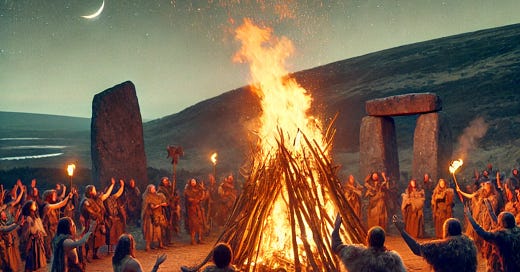The Beltane fires are one of Scotland’s most fascinating and enduring customs, offering a unique glimpse into the country's ancient history and religious practices. These fires, lit on the first of May, have roots in the pre-Christian, pagan rituals of the Celts and are intimately tied to the worship of Baal, the sun god. Though the rituals and beliefs surrounding Beltane have evolved over the centuries, the fire’s symbolic power and connection to renewal, protection, and fertility persist in Scottish culture today.
The Origins of Beltane: A Sun Worship Ritual
Beltane, from the Celtic words "Baal" (a god of the sun) and "tein" (fire), represents one of the most significant fire festivals in the ancient Scottish calendar. It signified the return of the sun's strength after the long, cold winter. For the early inhabitants of Scotland, primarily agrarian and deeply connected to the cycles of nature, the warmth and light provided by the sun were essential to life. As winter gave way to spring, the Beltane fires were lit in celebration of the sun’s growing power, with the belief that they could invoke protection, fertility, and good fortune for the coming season.
Keep reading with a 7-day free trial
Subscribe to Tales of Forgotten Scottish History to keep reading this post and get 7 days of free access to the full post archives.




